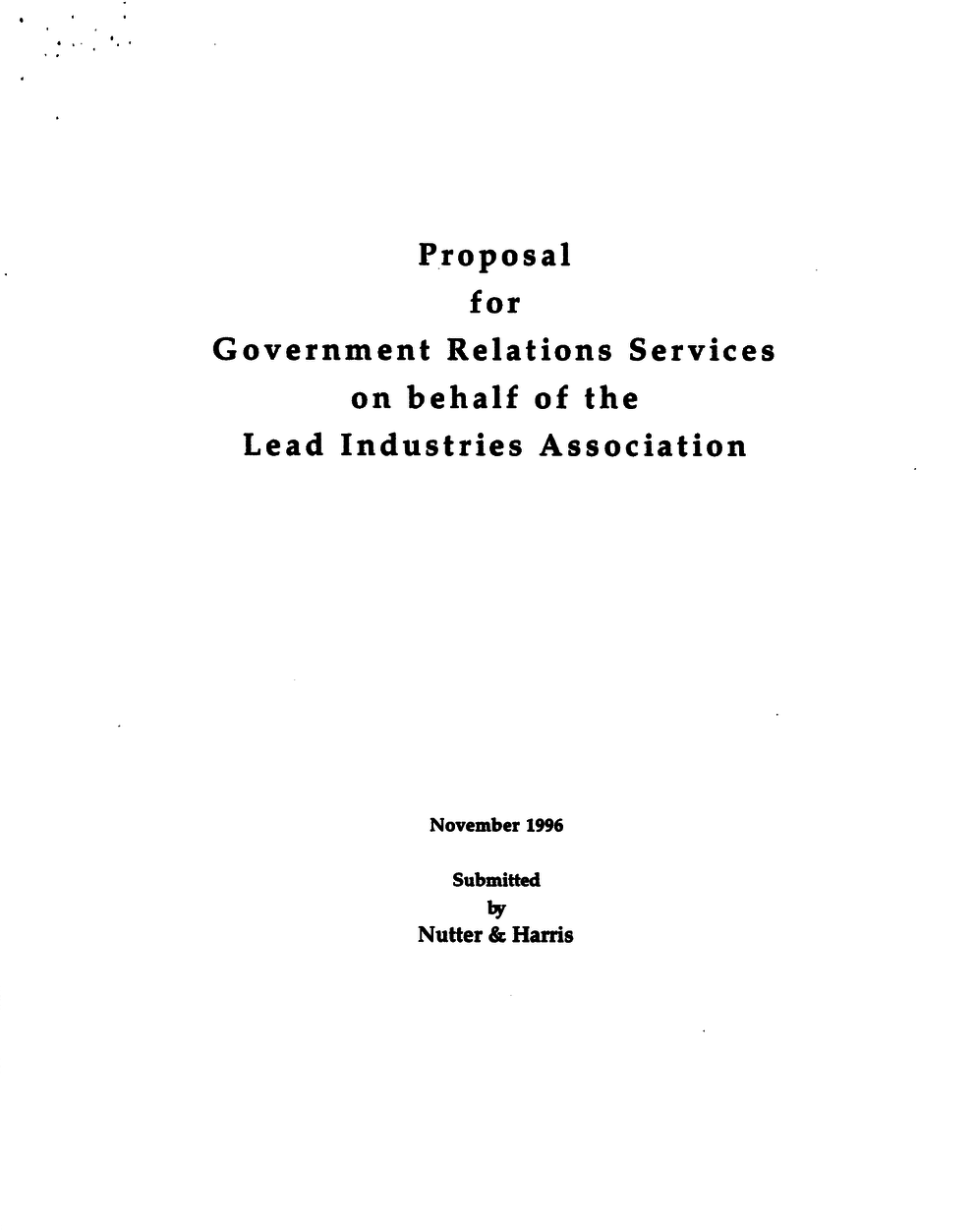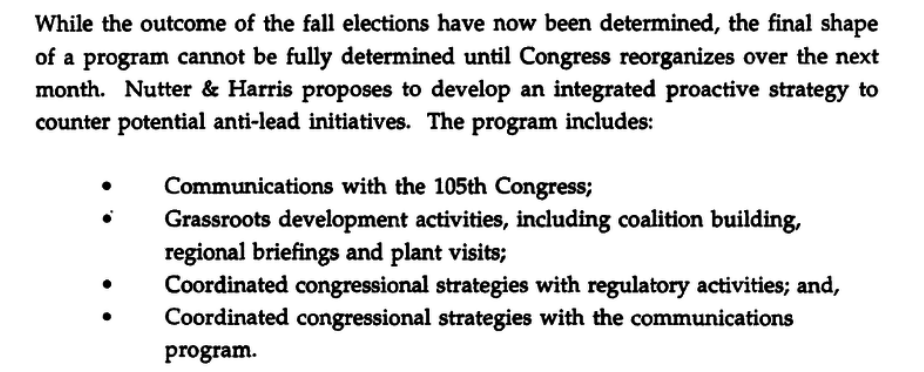Lead and Lobbying in the 1990s
In its final days, the Lead Industries Association (LIA) was still mounting aggressive campaigns to protect its members. Following the 1996 re-election of Bill Clinton, it received the following proposal from a public relations company, Nutter & Harris. The document laid out a strategy for survival in what was portrayed as an increasingly "anti-lead" milieu, particularly with heightened EPA interest in childhood lead poisoning.
Entitled "Proposal for Government Relations Services on Behalf of the Lead Industries Association," the document offers a peak into how the industry thought politically.
It opens by first taking stock of the new environment:
The release of EPA's report "Environmental Health Threats to Children," identifying lead poisoning as the top environmental health threat to children, signals a strong potential of renewed efforts to target lead in a second Clinton/Gore Administration. New issues continue to emerge, such as lead in vinyl blinds and playground equipment painted with industrial leaded paint. Of course, the lead paint in housing issue remains of great interest to the press and activists.
Concern over lead in public housing is highlighted:
The implications for clean up of public housing are significant because current funding levels are not adequate to pay for the program -- an issue addressed by the HUD Task Force. This raises the spectrum of a new push for a federal tax to meet the costs. Given alternative funding sources, lead would become a target once again.
The documents touts a victory on the international front while cautioning against complacence:
... during the last Congress, the industry was successful in thwarting international lead initiatives by the OECD by increasing political pressure on EPA and the State Department.
The proposal suggests a "government relations program" comprised of "Proactive communications before the 105th Congress; Grassroots development activities; Coordinated congressional strategies with regulatory activities; and Coordinated congressional strategies with communications
program."
"Early introductions and grassroots activities will be important in establishing a positive lead message on Capitol Hill," the document states elsewhere.
Of course, faced with liability from imminent legal proceedings, LIA would soon be defunct. And lead's public relations face, contrary to this document's aspirations, has hardly been pretty in the 20 years since. The document can be read, in some ways, as more of a last gasp than anything.
But it also remind us that industries coordinate and plan at both their greatest heights and in their final days. With many regulations once again on the chopping block, that's worth keeping in mind today.



